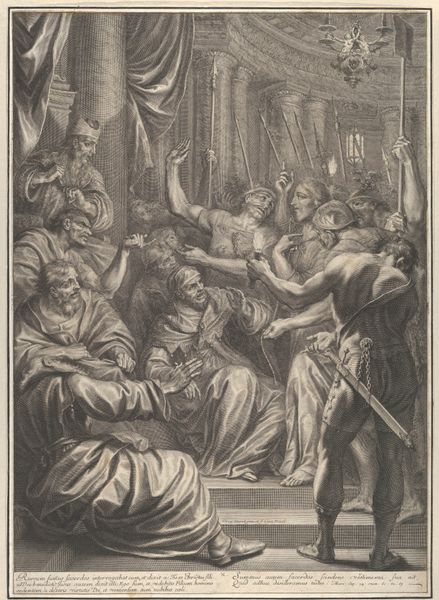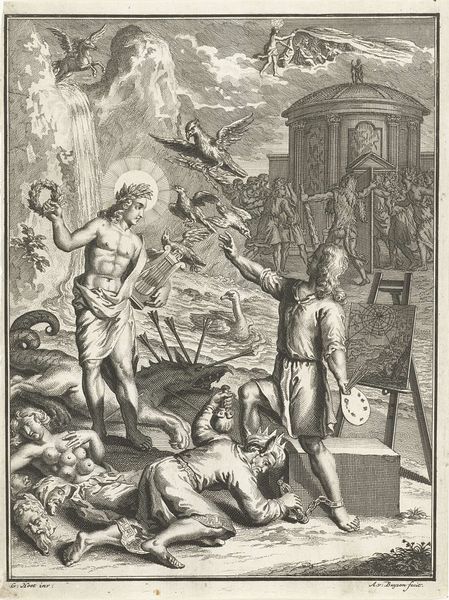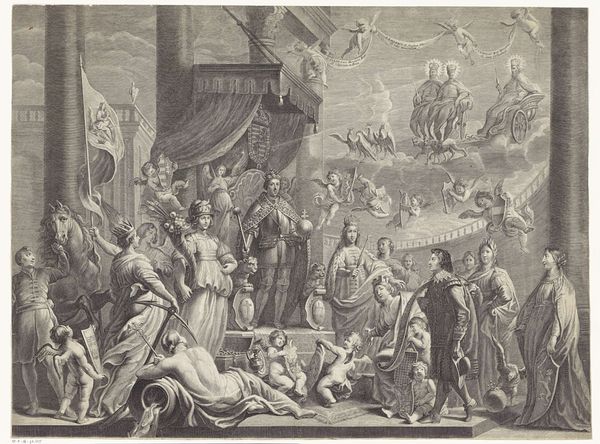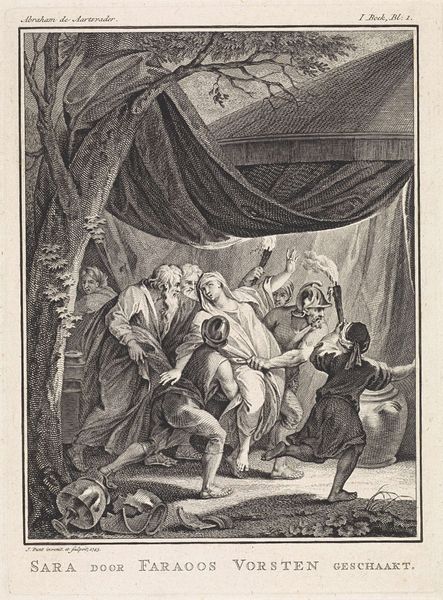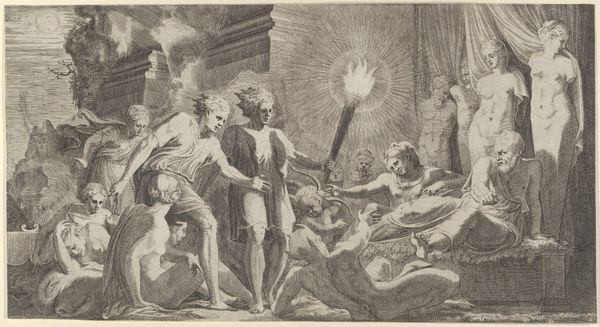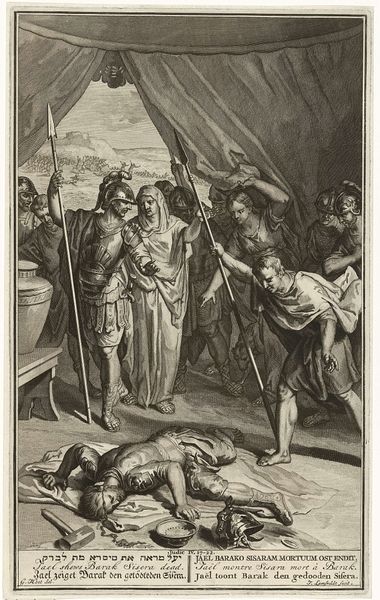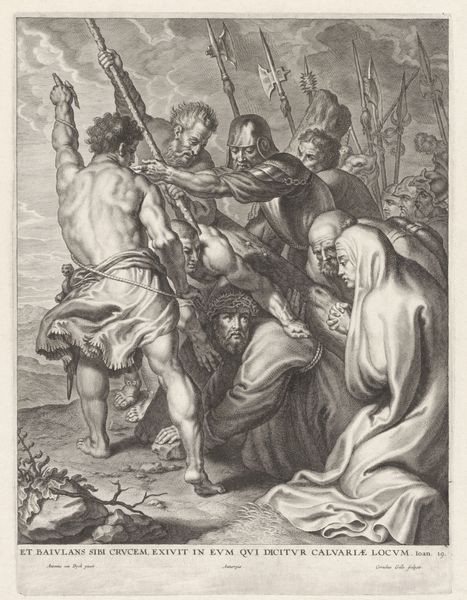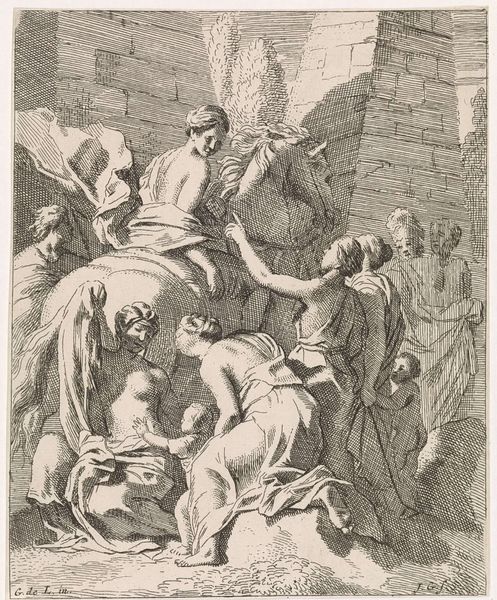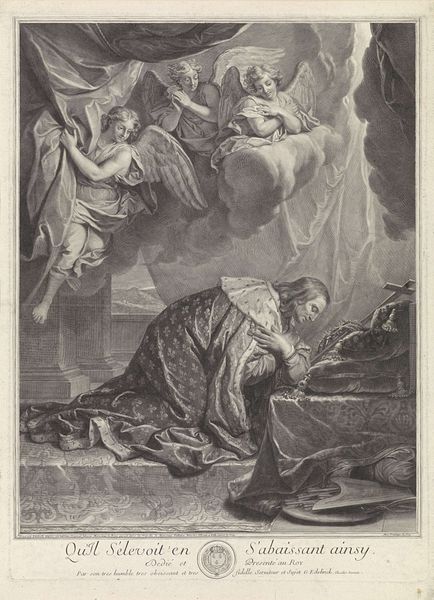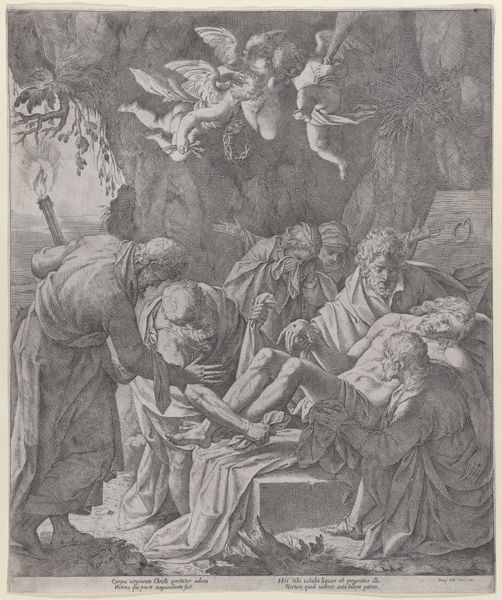
print, woodcut
#
medieval
#
narrative-art
# print
#
figuration
#
form
#
woodcut
#
line
#
history-painting
#
realism
Dimensions: 189 mm (height) x 116 mm (width) (bladmaal)
Editor: Here we have "Rolfs Død" or "The Death of Rolf," a woodcut created in 1852 by H. C. Henneberg. It’s… stark. Everyone is either dead or mourning under the moonlight. What story is Henneberg trying to tell us through this historical lens? Curator: This piece participates in a 19th-century fascination with Norse sagas, and signals a political undercurrent. Henneberg is not just depicting a historical event; he's contributing to the construction of national identity. How do you see the visual choices, like the stark contrast and dramatic lighting, reinforcing this nationalistic narrative? Editor: I see how the light emphasizes the Queen who holds the torch as a beacon of hope in the face of all this tragedy and darkness. Is that how it was received at the time, as a sort of rallying cry? Curator: Exactly! Remember, 19th-century art played a crucial role in shaping public sentiment and legitimizing political ideologies. The revival of the Nordic past provided visual material for ideas of national glory. Pieces like this, displayed publicly, fostered a sense of shared history and cultural destiny during a period of political and social change in Denmark. Were there alternative ways Henneberg could have visualized this "glory"? Editor: That's a great question... I suppose he could have shown a heroic battle, or the strength of their kingdom, but maybe showing the tragic consequences adds a sense of realism and therefore greater meaning. Curator: Precisely. It invites viewers to contemplate what was lost, and, implicitly, what must be fought for and preserved. So, what have we learned about how a seemingly simple woodcut actually served as a visual tool in constructing Danish national identity? Editor: I've definitely gained an understanding of the historical and social context and now see that "Rolfs Død" isn't just a scene from a saga but a powerful statement about Danish identity and cultural destiny. Thank you!
Comments
No comments
Be the first to comment and join the conversation on the ultimate creative platform.

